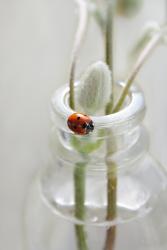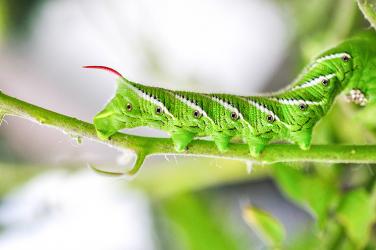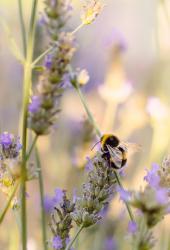Cracking the Case
When determining whether the bugs in your garden are good or bad—it’s important to know what to look for. The first step in discovering the identity of your outdoor guests is to take a closer look at the insect. Note how it’s interacting with your garden; if it seems to be eating your plants then you might have a bad bug on your hands. Another tip is to take a photo of the bug to look at later! This way you can use the image to search for similar bugs online. If there seems to be a large number of insects gathering in specific spots of your garden, you might have an infestation on your hands.
The Three P’s
Good bugs fall into one of the three p’s: predators, parasitoids and pollinators. These “good” bugs are hard workers who pollinate your garden and protect your plants by eating the bad bugs or infecting them. An example of a predator would be ladybugs. Ladybugs attack and eat aphids, small spiders and other mites. If left unchecked, aphids could seriously harm the plants in your garden. The second type of good bug, parasitoids, protects your garden by laying eggs near or on bad bugs. Once the eggs hatch, the larvae will eat the bad bugs. Finally, pollinators are the hard workers. An example of a pollinator is a bee, they are classified as good bugs because they work to spread pollen and help flowers grow.
Bad to the Bone
Bad bugs are categorized as any bug that threatens your garden. Whether they’re eating your plants or taking over native insects—these bugs are bad to the bone. One of the most common examples of a “bad” bug is the Tomato Hornworm. These insects eat and destroy plants in the tomato and potato families. Another example is the Japanese beetle; they can be incredibly destructive and love to feed on anything in their path - including your garden!
Proactive Planting
While managing all the pests in your garden can seem overwhelming, strategic planting can help set you up for success. Polyculture, or planting different species of plants in one area, is commonly used to replicate the plant diversity found in nature. Placing herbs, flowers and vegetables that grow well together can attract good bugs into your garden and weed out the bad ones.















